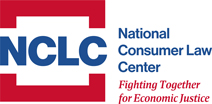February 7, 2018
Communities of color often face challenges connecting to and maintaining affordable broadband and voice service. The federal Lifeline program has been around since the mid-1980s. While it started as a low-income program to help households afford voice service, it has been expanded to include wireless voice and broadband Internet support. The program is available in every state and territory and has helped over 1.5 million households in 2016 with low-cost, and in some cases free voice (750 minutes a month) or voice and data services (for example, 3G and 1 GB/data in a wireless voice and data bundle). Now some of the most popular Lifeline products are under attack, particularly the universal availability of these low-cost/no-cost products. Hear from our panel of experts about the Lifeline program and how it works and what potential changes could emerge in the near future and what steps you can take to defend affordable access for low-income people.
Presenters:
Kham Moua, Associate Director of Policy and Advocacy (OCA – Asian Pacific American Advocates)
Carmen Scurato, VP, Policy and General Counsel (National Hispanic Media Coalition)
Cheryl Leanza, Policy Advisor (United Church of Christ OC Inc.) and President (A Learned Hand, LLC.)
Moderator: Olivia Wein, Staff Attorney (National Consumer Law Center)
More Lifeline resources (.zip file)


